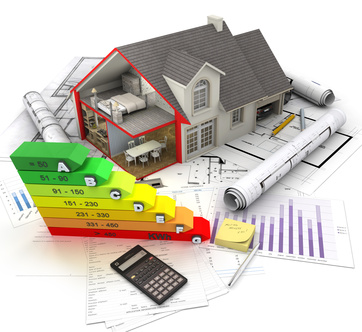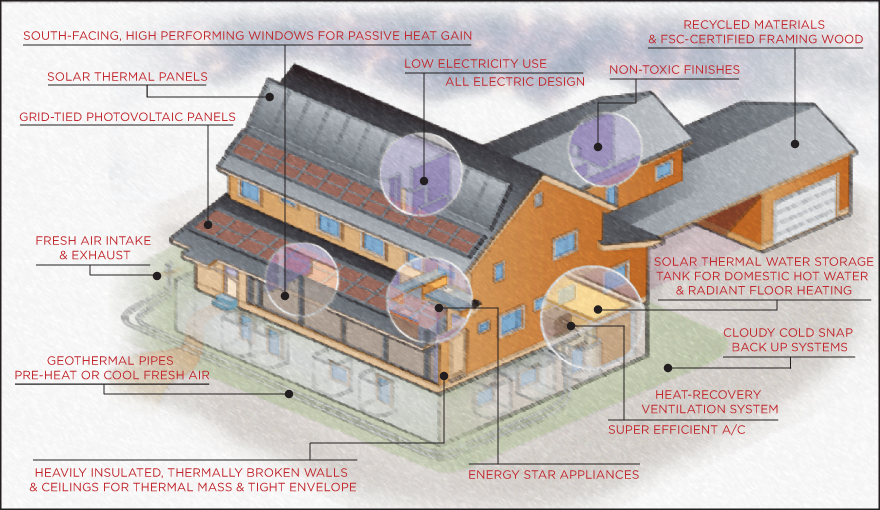

A zero-energy home is building with zero net energy consumption, meaning the total amount of energy used by the home on an annual basis is roughly equal to the amount of renewable energy created on the site or in other definitions by renewable energy sources elsewhere. These homes consequently contribute less overall greenhouse gas to the atmosphere. They do at times consume non-renewable energy and produce greenhouse gases, but at other times reduce energy consumption and greenhouse gas production elsewhere by the same amount.
Most zero net energy homes get half or more of their energy from the grid, and return the same amount at other times. Homes that produce a surplus of energy over the year may be called "energy-plus homes" and homes that consume slightly more energy than they produce are called "near-zero energy homes" or "ultra-low energy houses".
Most zero-energy homes use the electrical grid for energy storage but some are independent of the grid. Energy is usually harvested on-site through energy producing technologies like solar and wind, while reducing the overall use of energy with highly efficient HVAC and lighting technologies. The zero-energy goal is becoming more practical as the costs of alternative energy technologies decrease and the costs of traditional fossil fuels increase.
The development of modern zero-energy homes became possible not only through the progress made in new energy and construction technologies and techniques, but it has also been significantly improved by academic research, which collects precise energy performance data on traditional and experimental buildings and provides performance parameters for advanced computer models to predict the efficacy of engineering designs.
Most zero net energy homes get half or more of their energy from the grid, and return the same amount at other times. Homes that produce a surplus of energy over the year may be called "energy-plus homes" and homes that consume slightly more energy than they produce are called "near-zero energy homes" or "ultra-low energy houses".
Most zero-energy homes use the electrical grid for energy storage but some are independent of the grid. Energy is usually harvested on-site through energy producing technologies like solar and wind, while reducing the overall use of energy with highly efficient HVAC and lighting technologies. The zero-energy goal is becoming more practical as the costs of alternative energy technologies decrease and the costs of traditional fossil fuels increase.
The development of modern zero-energy homes became possible not only through the progress made in new energy and construction technologies and techniques, but it has also been significantly improved by academic research, which collects precise energy performance data on traditional and experimental buildings and provides performance parameters for advanced computer models to predict the efficacy of engineering designs.
Zero-energy homes can be part of a smart grid. Some advantages of these homes are as follows:
Integration of renewable energy resources
Integration of plug-in electric vehicles
Implementation of zero-energy concepts
Integration of renewable energy resources
Integration of plug-in electric vehicles
Implementation of zero-energy concepts
Concepts or components of zero energy homes
We help you and advise in building and designing affordable zero energy homes which involves 12 integrated steps that utilize
commonly available building materials and equipment along with easy-to-learn building strategies.
Start with Smart Design
Use Energy Modeling
Super-Seal the Building Envelope
Super-Insulate the Building Envelope
Heat Water Wisely
Use Highly Insulated Windows and Doors
Use the Sun for Solar Tempering
Create an Energy Efficient, Fresh Air Supply
Select an Energy-Efficient Heating and Cooling System
Install Energy Efficient Lighting
Select Energy Efficient Appliances and Electronics
Use the Sun for Renewable Energy

